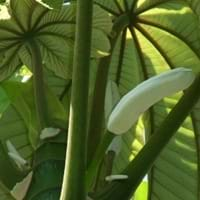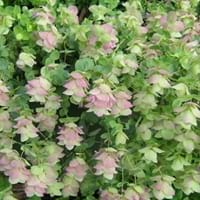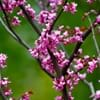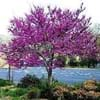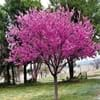Life Span
Perennial
Perennial
Origin
Caribbean, South America
Hybrid origin
Types
Not Available
Kent Beauty
Amethyst Falls
Barbara Tingey
Number of Varieties
Not Available
Habitat
Primary Rainforest, Riverbanks, subtropical regions, Tropical regions
Grassland, Open scrub, Rocky areas
USDA Hardiness Zone
10-15
5-8
Sunset Zone
H1, H2, 22, 23, 24
Not Available
Habit
Upright/Erect
Clump-Forming
Minimum Height
Not Available
Minimum Width
Not Available
Flower Color
Light Yellow, Light Green, Ivory
Pink
Flower Color Modifier
Bicolor
Bicolor
Fruit Color
Ivory
Not Available
Leaf Color in Spring
Green
Dark Green
Leaf Color in Summer
Green
Dark Green
Leaf Color in Fall
Green
Dark Green
Leaf Color in Winter
Green
Light Green
Leaf Shape
Circular and deeply palmately-lobed
Oval
Plant Season
Spring, Summer, Fall, Winter
Summer, Fall
Sunlight
Full Sun, Partial Sun
Full Sun
Growth Rate
Very Fast
Slow
Type of Soil
Loam, Sand
Loam
The pH of Soil
Acidic, Neutral, Alkaline
Neutral, Alkaline
Soil Drainage
Well drained
Well drained
Bloom Time
Indeterminate
Late Summer, Early Fall
Tolerances
Not Available
Drought
Where to Plant?
Ground
Container, Ground, Pot
How to Plant?
Seedlings
Seedlings
Plant Maintenance
Medium
Medium
Watering Requirements
Average Water Needs
Allow soil to be completely dry in between waterings, Does not require lot of watering, Water twice a day in the initial period, Water when soil is dry
In Summer
Lots of watering
Lots of watering
In Spring
Moderate
Moderate
In Winter
Average Water
Average Water
Soil pH
Acidic, Neutral, Alkaline
Neutral, Alkaline
Soil Type
Loam, Sand
Loam
Soil Drainage Capacity
Well drained
Well drained
Sun Exposure
Full Sun, Partial Sun
Full Sun
Pruning
Remove damaged leaves, Remove dead branches, Remove dead leaves
Remove damaged leaves, Remove dead branches, Remove dead leaves
Fertilizers
All-Purpose Liquid Fertilizer
All-Purpose Liquid Fertilizer
Pests and Diseases
Not Available
Red blotch
Plant Tolerance
Drought
Drought
Flowers
Insignificant
Yes
Flower Petal Number
Not Available
Single
Fragrant Leaf
No
Not Available
Foliage Texture
Bold
Fine
Foliage Sheen
Matte
Matte
Attracts
Birds, Fruit Bats
Butterflies
Allergy
Antibacterial, Anti-inflammatory
Not Available
Aesthetic Uses
Not Used For Aesthetic Purpose
Showy Purposes
Beauty Benefits
Not Available
Not Available
Environmental Uses
Air purification
Air purification
Medicinal Uses
Antidiabetic, Asthma
Bloating, Bronchitis, Cough, Cramps, Croup, Gastrointestinal disorders, Headache, Rheumatoid arthritis, Urinary tract problems
Part of Plant Used
Bark, Fruits, Latex, Leaves
Leaves
Other Uses
Used in making tea, Used in pies, cakes
Employed in herbal medicine, Used As Food
Used As Indoor Plant
No
Yes
Used As Outdoor Plant
Yes
Yes
Garden Design
Edible, Feature Plant, Fruit / Fruit Tree, Mixed Border, Shade Trees, Tropical
Container, Edging, Groundcover, Mixed Border
Botanical Name
CECROPIA palmata
ORIGANUM 'Rose Dome'
Common Name
Snakewood Tree
Ornamental Oregano
In Hindi
Snakewood Tree
सजावटी अजवायन
In German
Schlangenholz -Baum
Ornamental Oregano
In French
Amourette Arbre
ornement origan
In Spanish
Árbol de madera de serpiente
Ornamentales orégano
In Greek
Snakewood Tree
καλλωπιστικά Ρίγανη
In Portuguese
Snakewood Tree
ornamental Oregano
In Polish
Snakewood Tree
ozdobne Oregano
In Latin
Snakewood Tree
decentius Oregano
Phylum
Angiosperms
Not Available
Class
Eudicotyledoneae
Magnoliopsida
Order
Rosales
Not Available
Family
Urticaceae
Lamiaceae
Clade
Angiosperms, Eudicots, Rosids
Angiosperms, Eudicots
Tribe
Not Available
Mentheae
Subfamily
Not Available
Pitcairnioideae
Number of Species
Not Available
Difference Between Snakewood Tree and Ornamental Oregano
If you are confused whether Snakewood Tree or Ornamental Oregano are same, here are some features about those plants to help you choose better. Many people think that these two plants have the same characteristics, but one can see Snakewood Tree and Ornamental Oregano Information and learn more about it. Fertilizers required for proper growth of Snakewood Tree are All-Purpose Liquid Fertilizer, whereas for Ornamental Oregano fertilizers required are All-Purpose Liquid Fertilizer. Hence, one should know the basic difference between Snakewood Tree and Ornamental Oregano if you are planning to have them in your garden to enhance its beauty.
<
Flowering PlantsImportance of Snakewood Tree and Ornamental Oregano
Want to have the most appropriate plant for your garden? You might want to know the importance of Snakewood Tree and Ornamental Oregano. Basically, these two plants vary in many aspects. Compare Snakewood Tree and Ornamental Oregano as they differ in many characteristics such as their life, care, benefits, facts, etc. Every gardener must at least have the slightest clue about the plants he wants to plant in his garden. Compare their benefits, which differ in many ways like facts and uses. The medicinal use of Snakewood Tree is Antidiabetic and Asthma whereas of Ornamental Oregano is Bloating, Bronchitis, Cough, Cramps, Croup, Gastrointestinal disorders, Headache, Rheumatoid arthritis and Urinary tract problems. Snakewood Tree has beauty benefits as follows: Not Available while Ornamental Oregano has beauty benefits as follows: Not Available.
Compare Facts of Snakewood Tree vs Ornamental Oregano
How to choose the best garden plant for your garden depending upon its facts? Here garden plant comparison will help you to solve this query. Compare the facts of Snakewood Tree vs Ornamental Oregano and know which one to choose. As garden plants have benefits and other uses, allergy is also a major drawback of plants for some people. Allergic reactions of Snakewood Tree are Antibacterial and Anti-inflammatory whereas of Ornamental Oregano have Not Available respectively. Having a fruit bearing plant in your garden can be a plus point of your garden. Snakewood Tree has showy fruits and Ornamental Oregano has no showy fruits. Also Snakewood Tree is not flowering and Ornamental Oregano is flowering. You can compare Snakewood Tree and Ornamental Oregano facts and facts of other plants too.
